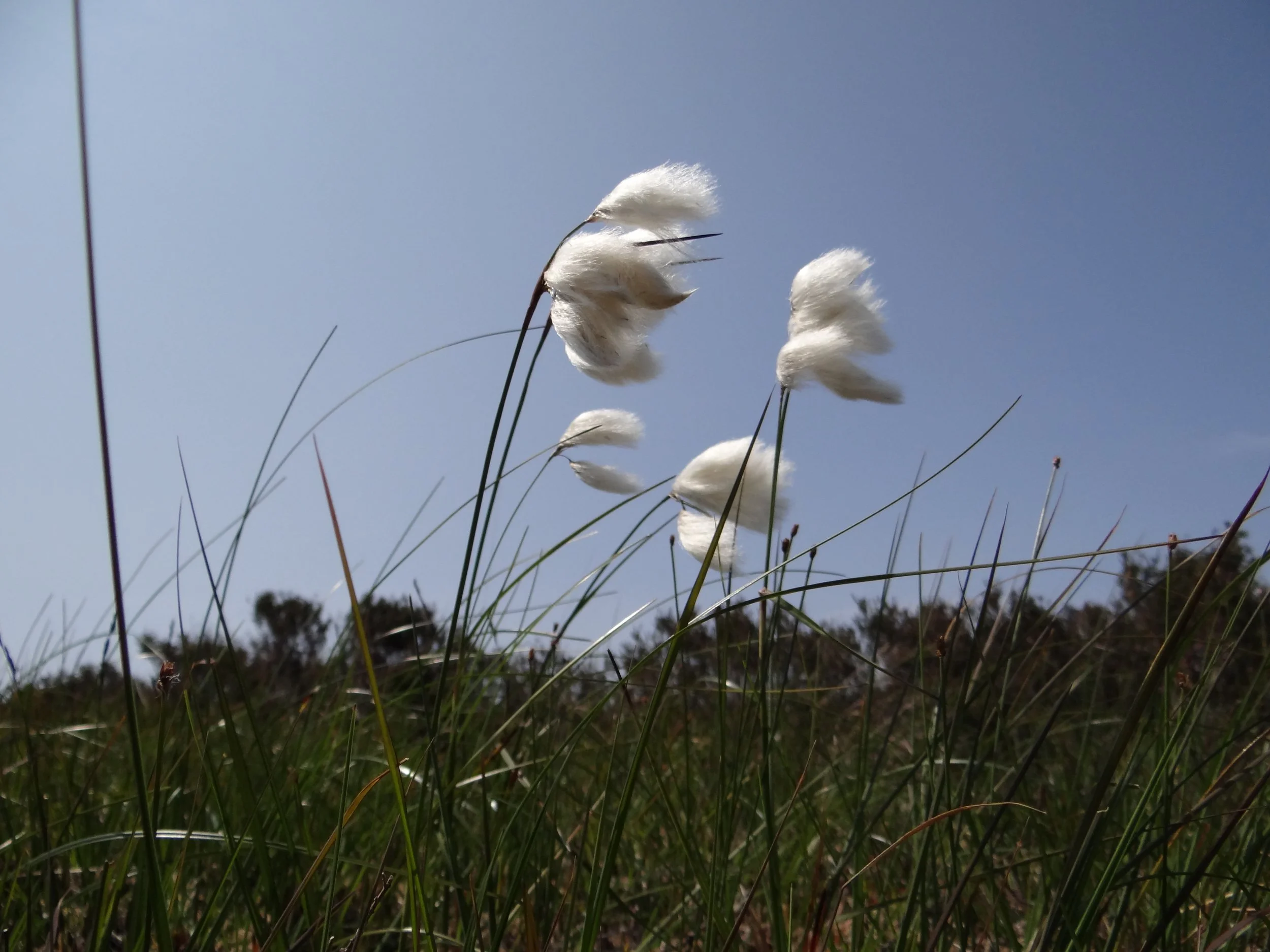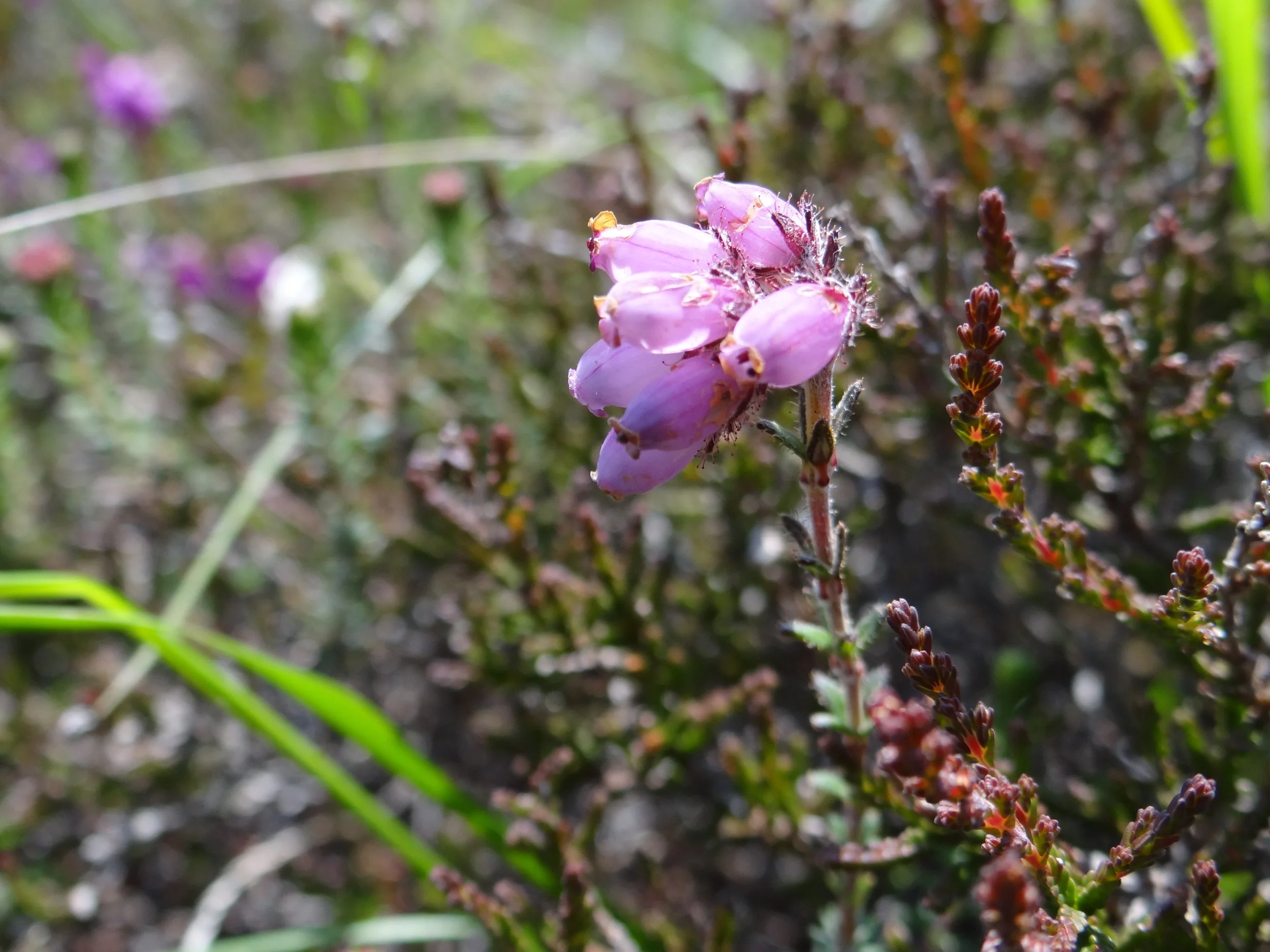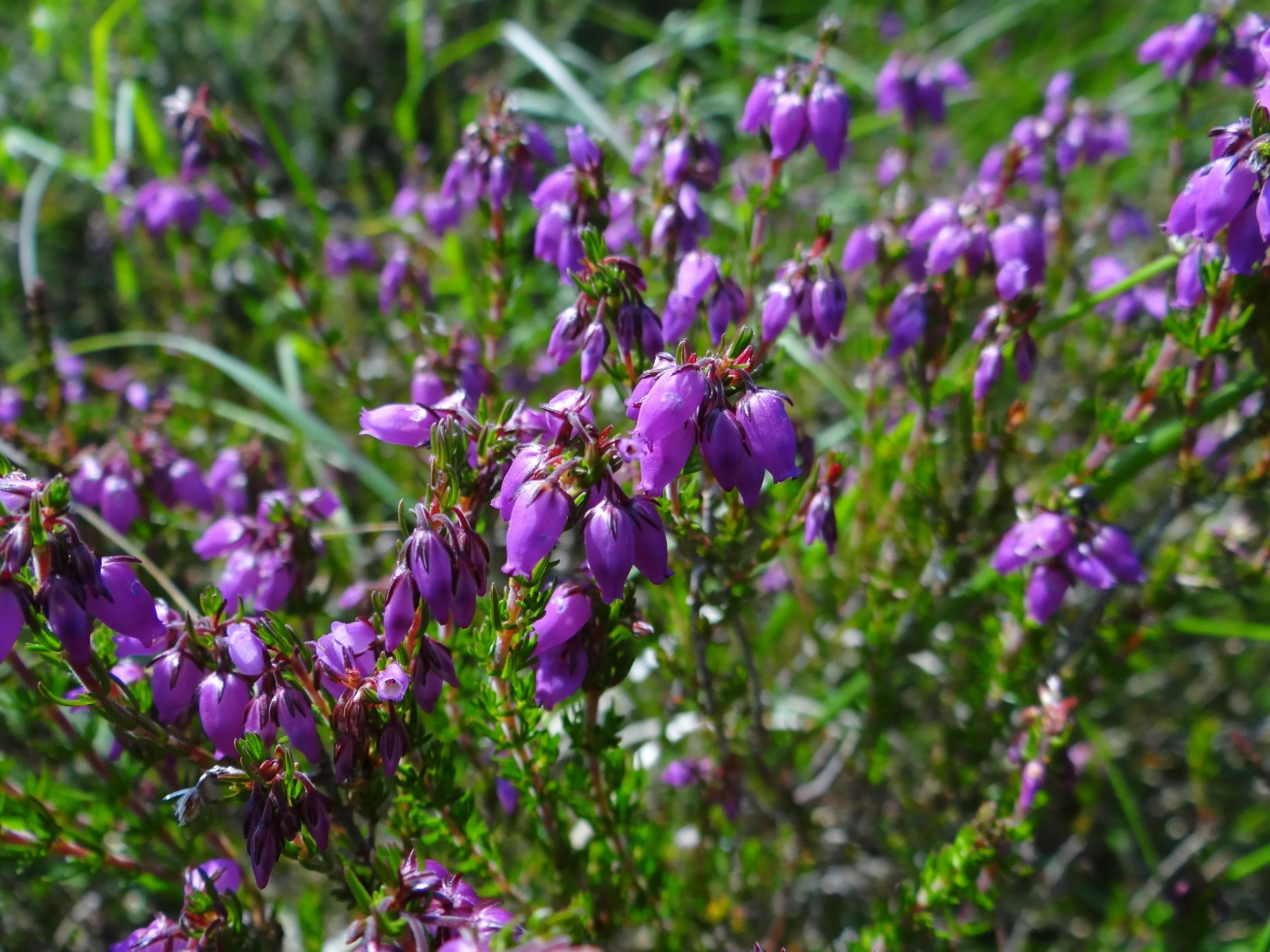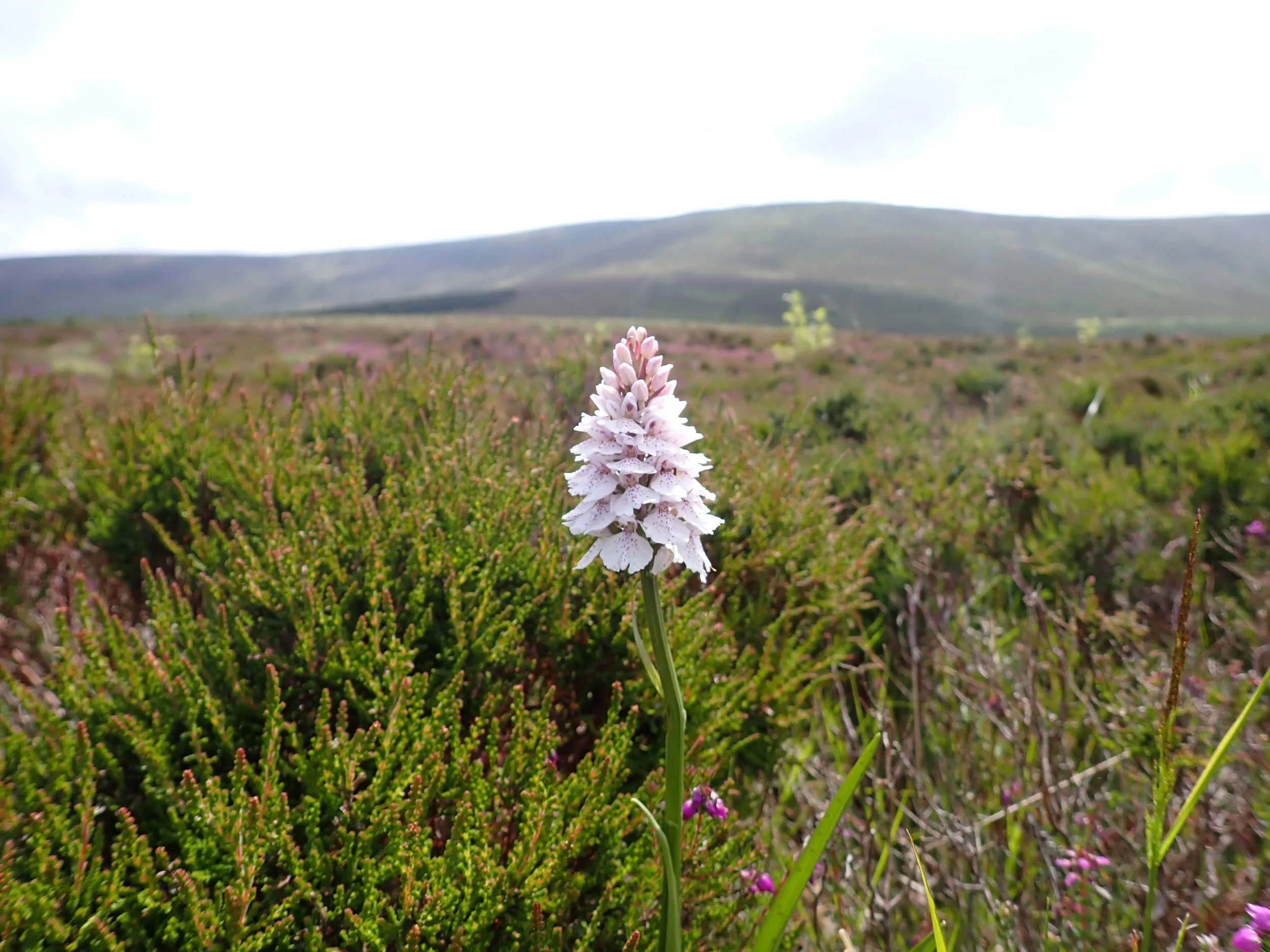
Plants
Hare’s tail cotton-grass
Easily mistaken for common cotton-grass, however, it is distinguishable due to its one greyish-white fluffy seed head (like a hare’s tail). The cottony seed hairs have been used to make candle wicks historically.
Common cotton-grass
Often mistaken for sheep’s wool, the fluffy white seed heads blow in the wind, bringing the hills to life in late spring. Each stem has multiple drooping seed heads. Historically, they were used to dress wounds or fill pillows.
Round-leaved sundew
This tiny carnivorous plant has round, red-edged leaves that are covered in sticky hairs that trap insects—an adaptation to the nutrient-poor, acidic soils of bogs and wet heaths. Small white flowers appear from June to August, to help attract insects.
Ling heather
Ling heather has small pinky-purple flowers that bloom from late summer to early autumn. Ling provides vital habitat and food for bees, moths and red grouse. It is often a component of healthy peatland, but is more dominant in drier areas.
Cross-leaved heath
Cross-leaved Heath is easily recognised by its soft, grey-green leaves arranged in whorls of four and its clusters of pink, bell-shaped flowers, which sit on one side of their stems. Flowering from June to September, this species thrives in acidic, waterlogged soils.
Bell heather
Named for its bell-shaped flower, this species begins carpeting our uplands between June and September, slowly turning them purple. Bell heather has needle-like leaves that are in threes, and flowers that grow all around the stem.
Bog asphodel
The Yellow, star-shaped flowers with woolly orange-tipped stamens start appearing in early Summer, turning deeper orange as they fruit into Autumn. This plant prefers damp, peaty soils.
Heath spotted-orchids
A delicate beauty of damp uplands, the Heath Spotted-orchid is known for its dense spike shape made up of pale pink to purple flowers, each marked with intricate purple spots and streaks. It stands proud amongst the green upland backdrop, adding a splash of colour during the summer.
Blaeberry
This low-growing shrub is common across the uplands, usually on drier areas of peatland. Small bell-shaped flowers appear in early summer, with berries abundant by August. This is an important plant for pollinators and is also favoured by sheep (and people!).
Heather and its importance
Heather moorlands are a dominant and defining plant of the Manx uplands, playing a central role in its ecosystem. Ling and Bell heather carpet the Isle of Man’s hills with shades of purple from July. Cross-leaved heath adds a pop of pink to the picture. One thing all three species have in common is their flowers’ ability to attract pollinators, acting as a key nectar source for bees and butterflies. Their dense structure offers shelter and nesting sites for birds, insects, reptiles and amphibians.
Heather roots are strong and woody, helping stabilise peat soils, reducing erosion from wind and rain. Their root systems improve the soil’s ability to hold water, supporting nearby wildlife and helping regulate water flow into streams and rivers. As peatlands recover, the return of healthy heather helps restore both ecological balance and cultural heritage. Historically, it was used by local communities for thatching roofs, making brooms, bedding, and even brewing heather ale.











